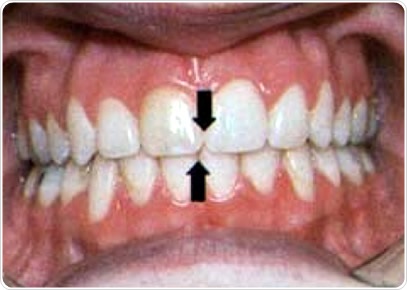What is Malocclusion?
While occlusion refers to the proper alignment of teeth in the upper and lower jaws so that they fit together to create a healthy "bite," malocclusion refers to a disruption of this alignment and incorrect relation between the upper and lower teeth.
Malocclusion results in malfunction of the major components involved in chewing including the teeth, the upper jaw (maxilla), the lower jaw (mandibular) and jaw joints (temporomandibular joints). The gums, periodontal structures, and any muscles and ligaments associated with chewing may also be affected.

Determining the extent of malocclusion
To determine the level of malocclusion, two major characteristics are assessed:
- The intra-arch relationship which refers to the way the row of teeth are aligned in the curve of either the lower or upper dental arch
- Inter-arch relationship, otherwise called the bite or occlusion between the upper and the lower teeth
An ideal occlusion has the following features:
- Both the arches are regular with teeth at ideal inclinations and within correct proximity to each other at dental contact points
- The lower tooth (except the central incisor) should make contact with the corresponding upper tooth and the tooth in front of it. The upper arch slightly overlaps the lower arch
- When the upper and lower teeth are in contact with each other, the jaw bones and joints are correctly positioned and movement is unstrained
Symptoms of malocclusion
Some amount of malocclusion may occur without causing any problems and is termed physiological malocclusion. However, malocclusion is termed pathological when it causes symptoms such as:
- Difficulty in chewing
- Difficulty in biting
- Injury to gums, lips and tongue during biting, chewing or speaking
- Disorders of the gums and teeth
- Loose teeth
- Pain in the joints and muscles of the jaws, especially on chewing
Causes of malocclusion
The exact cause of malocclusion is unknown but some of the associated factors are:
- Genetic factors – malocclusion may run in some families
- Congenital syndromes that result in e.g. small teeth or a small lower jaw
- Environmental factors such as pressure from surrounding soft tissues or thumb sucking
- Injury
Treatment of malocclusion
Treatment of malocclusion is attempted only when there are symptoms or if there is a desire on the part of the patient to acquire a cosmetically aligned set of teeth for psychological well being. Orthodontic treatments are usually chosen for correction of malocclusion.
Sources
- www.columbia.edu/…/…f%20Malocclusion%20GALLOIS%2006%20final_BW.pdf
- www.pua.edu.eg/…/CLASSIFICATION_OF_MALOCCLUSION_Modified.pdf
- http://www.drfrankhsieh.com/ortho/identifying%20a%20malocclusion.pdf
- dental.usm.my/ver2/images/stories/AOS/Vol_2/0309_rozita_occlusion.pdf
- www.orthoorganizers.com/…/…t%20of%20Class%20II%20Malocclusions.pdf
Further Reading
- All Malocclusion Content
Last Updated: Jun 28, 2019

Written by
Dr. Ananya Mandal
Dr. Ananya Mandal is a doctor by profession, lecturer by vocation and a medical writer by passion. She specialized in Clinical Pharmacology after her bachelor's (MBBS). For her, health communication is not just writing complicated reviews for professionals but making medical knowledge understandable and available to the general public as well.
Source: Read Full Article


